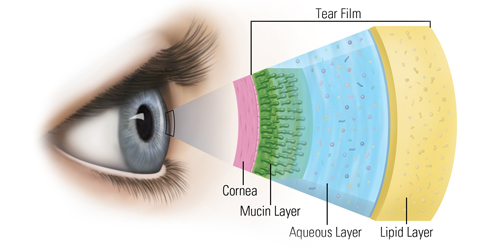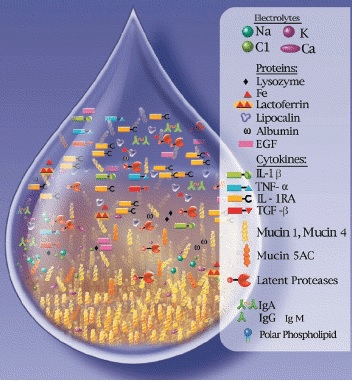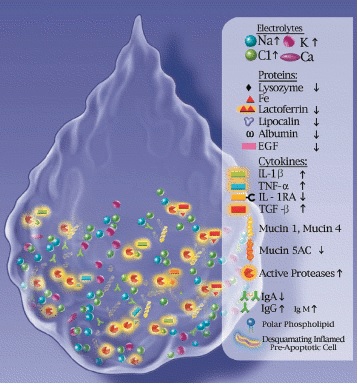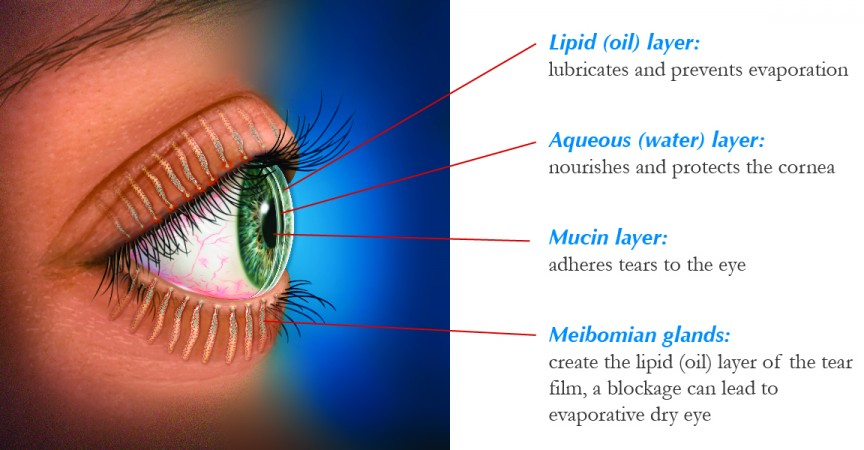Dry Eye Syndrome
Chronic Dry Eye, also known as dry eye disease, dry eye syndrome or keratoconjunctivitis sicca, is a chronic disease that can be caused by advanced age, contact lens wear, certain medications, eye diseases, eyelid disorders, other medical conditions, or environmental factors. It is a result of poor tear quantity or poor tear quality or both.
Atasca Eye Center offers several treatment methods to help its patients resolve severe chronic dry eye. The doctors will work to determine which is the best dry eye treatment for each patient.
Treatments for Dry Eye Due to Poor Tear Quantity
One type of dry eyes is a result of poor tear quantity, which means the amount of tears your eyes produce is inadequate.
If you are suffering from severe dry eye as a result of poor tear quantity, our doctors will check for systemic diseases and systemic symptoms like dry mouth and arthritis. They may also offer one or more of the following dry eye treatments:
Restasis Treatment
Each eye has its own tear gland that produces tears. This gland can become inflamed and decrease the gland’s production of tears. Our doctors may treat dry eye with anti-inflammatory medicines that increase tear production, such as Restasis. Restasis treats the inflammation of the tear gland and helps it to regain function. Restasis can be used long term with few side effects. Click here to learn more about Restasis.
Xiidra Treatment
Xiidra is a prescription eye drop used to treat the signs and symptoms of dry eye disease. Click here to learn more about Xiidra.
Punctal Plugs
The upper and lower eyelids have small holes near the corner of our eyes called punctas. These are the openings of the tear drainage system for the eyes. One strategy in treating dry eyes is blocking these drains with punctal plugs. They are easily inserted in the office and help the tears to stay longer in the eye. It is similar to blocking the drain in a kitchen sink so the “water” or tears stay longer in the eye.
Artificial Tears
Another common treatment for dry eye caused by poor tear quantity is artificial tears in the form of eye drops. These drops can supplement the eyes’ lack of tears, and they come in different thicknesses from liquid drops to gels to ointments.
Treatments for Dry Eye Due to Poor Tear Quality
For patients suffering from dry eye as a result of poor tear quality, the doctors at Atasca Eye Center offer several dry eye treatments to help the oil glands’ production, which in turn helps tears to stay longer in the eye.
Normal Healthy Tear Composition Chronic Dry Eye Tear Composition
Eyelid Hygiene Treatment
One of the treatments our doctors offer is an eyelid hygiene treatment with warm compresses and eyelid scrubs. Warm compresses with moisturization can open the glands that secrete the oil layer to help keep your tears on your eyes longer.
Azasite
Azasite is a drop used to treat eyelid margin disease. This drop can be used for infections of the eyelids and also to help the oil glands on the eyelids to function properly. Click here to learn more about Azasite.
Moisture Chamber Goggles
To prevent premature evaporation of the tears there are other methods that can be used. Special goggles can be worn so the eyes are not exposed to drying environments. Some patients find sleeping with an eye mask and turning off their ceiling fans also help their dry eyes.
Oral Medications or Supplements
The doctors at Atasca Eye Center may prescribe anti-inflammatory oral medications that help the eyelids, like Doxycycline or Minocycline as treatment for dry eyes. They also may treat dry eyes with omega 3 fatty acid supplementation. These fatty acids are found in fish oil and flaxseed oil supplements.
Dry Eyes and LASIK
LASIK may increase already existing dry eye symptoms. In some patients this can last just a few months, and in others it can be chronic. Depending on the severity of the dry eye, some patients are still able to have LASIK, but for other patients, our doctors recommend PRK or dry eye treatment before the procedure. A refractive surgery consultation is used to evaluate the severity of the dry eye.
In our Dry Eye Clinic we will conduct a series of evaluations and determine the likely cause of your Dry Eye symptoms.
First, you will complete a Dry Eye Lifestyle Questionnaire – this brief assessment allows us to understand how your eyes feel on a daily basis. (Feel free to print out our online copy, complete the questionnaire, and bring it to your next appointment.)
If the questionnaire indicates symptoms beyond mild, we will proceed with several tests to determine what the cause of ocular irritation or Dry Eye may be.
Testing for Dry Eye
Several different instruments are used to evaluate for Dry Eye. Among some of these are TearLab® Osmolarity testing, Zone Quick testing, InflammaDry®, Meibography, and various other techniques.
TearLab® Osmolarity essentially looks at the content of the tears made from the eye. Are your tears more salty than watery? This instrument will aid in diagnosis.
Dry Eye is treated in many different ways. In our clinic, patients will be treated based on their severity. Some of our unique treatments include:
- OTC Artificial Tears/Gels/Ointments
- Osmolarity Lowering: Blink Tears, TheraTears, Oasis Tears MD PF, Oasis Tears Plus
- Lipid Deficient: FreshKote, Refresh Optive Advance, Retaine MGD, Systane Balance, Soothe XP, & Tears Again Liposome Spray
- Aqueous Deficient: GenTeal Gel, GenTeal PM, Refresh Lacri-Lube, Refresh Optive/Tears, Refresh PM, Retaine PM, Systane Nighttime, Systane Ultra, Systane Gel Drops
- Osmolarity Lowering: Blink Tears, TheraTears, Oasis Tears MD PF, Oasis Tears Plus
- Tailored lid hygiene management
- Blinking exercises to help with oil flow
- Lacriserts
- Prescriptive Eye Drops
- Compounded androgen therapy & serum tears
- Oral medications & supplements
- Moisture Chamber Goggles
- Amniotic biotissue for severely damaged corneas
- Scleral contact lenses which change the ocular surface environment



